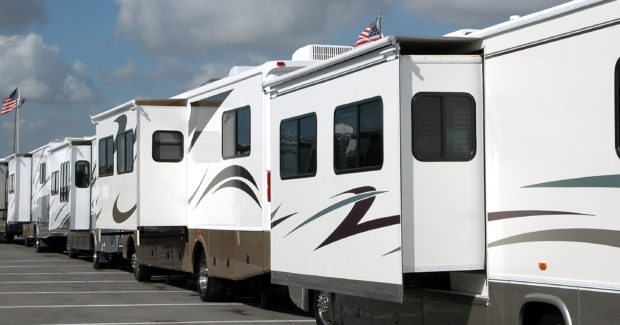Taking Stock: A Brief History of Metal Manufacturing’s Response to COVID-19
Despite what news reports would have you believe, the outlook isn’t all gloom and doom. Armed with funds from new federal loan programs, companies bought or refinanced equipment and consolidated debt to serve expanding markets and/or new business generated by reconfiguring supply lines.
Posted: August 17, 2020
PROFIT MASTERY COLUMN
BY DAVID GOOSE AND CHRIS RICHARDSON
It’s been a crazy few months and while we all wish we had a crystal ball to tell us when things would get back to normal, we don’t. However, by looking at what has happened over the last few months in the world of manufacturing equipment financing, there are things to be learned and insights to be gleaned.
First off, it’s not all doom and gloom. Yes, there was a dramatic drop in manufacturing technology orders and cutting tool orders in the second quarter of 2020 due to the global pandemic. However, a fairly robust summer bodes well for the long-term outlook for metal fabrication and machining.
The Initial Impact of COVID-19
When the pandemic first hit and stay-at-home orders were first imposed, a great many businesses temporarily ceased operations. This initial panic caused many companies to assume the worst: that they wouldn’t be producing, shipping and selling products, and that they’d have trouble collecting on outstanding invoices.
When the Small Business Administration (SBA) introduced the Paycheck Protection Program (PPP) and the Economic Injury Disaster Loan (EIDL) and loan advance program, companies scrambled to submit applications, overwhelming the banks and small-business lenders. In many cases, due to the limited availability of funds and the fear that funds would be allocated before they could access them, companies that might not even have needed PPP money applied. Additionally, many companies quickly reached out to their banks and other lenders requesting loan extensions and/or skip-payment options.
Essentially, many overreacted because they anticipated a greater impact than actually happened. Luckily for the industry, manufacturing was deemed “essential” and many companies and shops started operating again, albeit with some modifications.
Manufacturing Investments
The PPP funds are mainly to be used for payroll – to help companies with reduced revenue continue to pay their employees; otherwise it becomes a loan, which must be repaid, instead of a grant, which does not (forgiveness). There is an allowance for some of the funds to be used to pay interest, but PPP money isn’t meant to be used to purchase new equipment or tooling.
However, as manufacturers came back to work, many saw the need to retool or make adjustments to take advantage of new opportunities. In many cases, this retooling required investment.
Typically, in fabricating and machining equipment financing, summers are down months. We didn’t see the typical summer lull in 2020. Instead, manufacturers took the opportunity to perform upgrades, in many cases updating technology to handle more of what they were already doing. Activities included:
Investing in automation tools and movable/portable robots to increase handling, loading/unloading capabilities and speed part inspection.
Product diversification – looking for new products to run on existing equipment.
Adding equipment and accessories – such as additional axes and higher-wattage lasers to cut thicker material – to enhance capabilities and increase production speeds.
Additionally, some manufacturers took advantage of reduced production to perform maintenance and cleaning activities. This allowed them to make improvements and to keep some employees working, ultimately setting them up for future success.
The HOT Industries and Products
While some industry segments have experienced significant declines during the pandemic – automotive parts, restaurant equipment, and medical devices related to elective surgery, for example – others are experiencing increased demand. It’s these sectors and products where we’ve seen investments in new equipment and capabilities.
- Lifestyle and Leisure: Motor homes, Boats, Pools, Camping equipment
- Defense and Firearms
- Structural Steel
- Medical Equipment: Ventilators, Beds
This list is certainly not all-inclusive. We’ve also seen an increase in activity involving plastic injection molding machines, and in general, feel the fabricating side of the business has been stronger than the machining side.
The Impact of the Paycheck Protection Program (PPP)
As noted above, many companies scrambled to apply for PPP money immediately. According to data released by the SBA, of the 661,218 companies that received PPP funds in excess of $150,000, nearly 14,000 are metal fabrication companies (NAICS 332), just over 2% of recipients.
The program generated a huge influx of applications to banks and SBA lenders, which caused extreme backlogs in underwriting and processing. The resulting delays also affected loans outside the PPP program, and those backlogs and delays are still being felt. Some banks and other lenders have loan turnaround times of up to three months.
Outside of the PPP loan activity, a majority of financing requests in April and May were for extensions and/other accommodations to existing financing. Once that surge passed, loan activity included, in descending order:
- New equipment purchases
- Refinance combined with new equipment purchase
- Working capital with new equipment purchase
- Debt consolidation
Many banks have tightened their underwriting requirements or have left the market altogether. In this environment, that makes having the right partner and access to capital critical. Your funding partner must stand ready help grow your business and assist in uncertain times.
Expectations for the Near Future – Light at the End of the Tunnel?
Overall, we feel manufacturing is in a much more positive state than one would assume from watching the news, which is also consistent with the Institute of Supply Management’s (ISM) recent Manufacturing ISM reports. This is, in part, being fueled by continued onshoring or reshoring. Some of this reshoring can be attributed to tariffs imposed before the pandemic, but some is due to supply chain disruptions caused, or exacerbated by, COVID-19.
Our business indicates there is significant market activity and many equipment dealers are busy, in some cases busier, than in typical summers. Some of this can be attributed to the fact that the International Manufacturing Technology Show (IMTS) and Fabtech trade shows were cancelled. Typically, there’s a lull in purchase activity before those shows as manufacturers wait to see what show specials might be available. We didn’t see that lull this summer.
One thing to consider for the future is that we could eventually see lead times extended for some equipment. There was a definite drop-off in equipment manufacturing in the second quarter. This could mean machine tool builders reduced production to help ease the burden of high inventories, thus reducing the number of machines in the pipeline. As activity picks back up, they’ll need time to ramp up production to fill the pipeline again, resulting in longer lead times. The same phenomenon occurred in 2010/2011 so it’s nothing new, simply worth noting.
All in all, we determine that the outlook is good. The wise manufacturers are the ones that keep an eye on the bottom line while making investments for the future. And we anticipate that future to be bright.
One Caveat:
These are the observations of Commercial Credit Group Inc./Manufacturers Capital and may not be applicable in all regions and all industry segments. This article was written in August for publication in October; due to the rapidly changing economic landscape, some information may no longer be accurate.
















